FutuRaM involves 28 partners (associations, companies, universities) and over 100 experts from different scientific and technical fields covering six waste streams: batteries, electrical and electronic equipment, vehicles, mining; slags and ashes, and construction and demolition. Our researchers often engage in passionate conversations across their fields and most importantly about the relevance of this project. Their enthusiasm is fascinating and to be shared with the world. Meet the researchers behind FutuRaM!
Kirsten Remmen, is a Research Associate at Empa and one of the most active members of our community, working on the conceptual and methodological development of FutuRaM. We asked Kirsten to elaborate on her academic and research background, goals, and thoughts of the project as well as to give us a sneak peek of her previous and preferred research topics outside the framework of FutuRaM.
Tell us a bit more about your academic and research background. Is there a research project that piqued your interest?
I studied mechanical engineering with a focus on chemical process engineering at RWTH Aachen. My attention was truly captured when I participated in a lecture discussing highly polluted wastewaters. So much so that I dived deep into the details and completed my master thesis in the field of phosphorus recovery from sewage sludge. Phosphorus is a finite element and essential for all living organisms, furthermore phosphorus and phosphate rock are part of the EU Critical Raw Material List since 2014.
The applied research carried out during my PhD project is still one I hold close to my heart. It included identifying the most suitable membranes and applying the membranes to real waste streams on site (spent acid from industrial process). We built and designed the pilot plants, tested new membranes to identify the best possible solution and analyzed the membranes properties. The underlying hypothesis was that we needed novel solutions for acidic wastewater and spent acid treatment to reach new levels of resource efficiency and closed loop processes. The application of currently commercially available membranes for acidic filtration is limited by low flux and static membrane properties. Within this project, Layer-by-Layer (LbL) modified membranes have been developed with significantly higher fluxes (up to 16 times) which can be tailored for any specific filtration task.
Can you describe your scientific community for us?
The scientific community around me has always been encouraging and I was lucky enough to be surrounded by likeminded people. During my years at the university as a student and equally as an employee, I was given a lot of opportunities to learn and develop my skills, extend my horizon and be able to advance in my career. People in science are open to change, experiments and supportive of new ideas, which makes it an exciting place.
What should we know about Empa?
I am currently working for Empa as a Research Associate in the group of Critical Materials and Resource Efficiency at the Technology & Society Laboratory in St. Gallen (Switzerland). Empa, the Swiss Federal Laboratories for Materials Science and Technology, is the research institute for materials science and technology of the ETH Domain and conducts cutting-edge research for the benefit of industry and the well-being of society.
Let’s talk about FutuRaM. You are one of our most motivated consortium partners, what drives you? What do you hope to achieve with this project?
Throughout my whole professional career, I have been working on environmental science and sustainability topics. This is driven by my motivation to contribute to a more sustainable society, which is why I am glad to be part of FutuRaM.
FutuRaM is a fascinating project as we are developing a concept together with partners, in both inter- and multidisciplinary teams. This facilitates filling gaps to achieve circular economy by complementing each other’s knowledge. The consortium is developing a concept fit for purpose supporting existing frameworks and using available data. Combining our shared knowledge and data already available via various sources, we are simplifying the process while creating something meaningful.
I expect a tangible impact from FutuRaM, enabling resource recovery from various waste streams based on facts (e.g., supporting the Critical Raw Materials Act) and clear guidelines. It is a great project enabling us to build collaboration with other scientists from all over Europe. The scientific discussion around critical raw materials and recoverability is topical.
How would you simplify and explain the goal of FutuRaM to a passer-by who has never heard of EU funded projects and CRMs?
Closing the loop for valuable materials, to secure our transition to net-zero.
